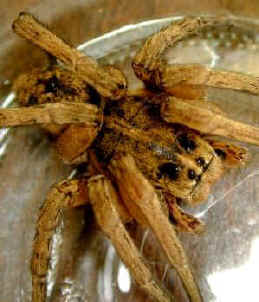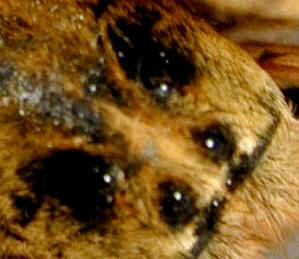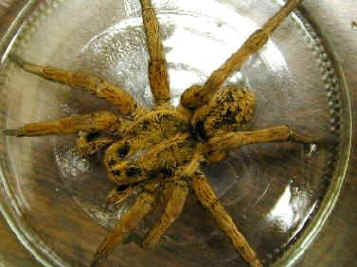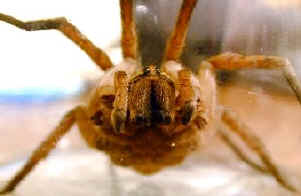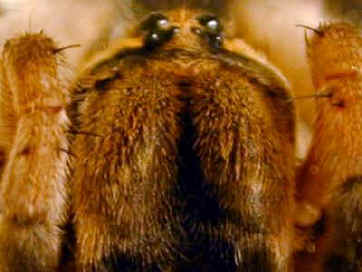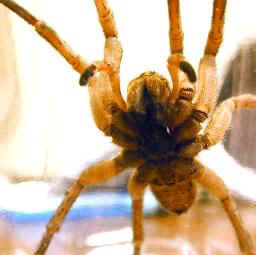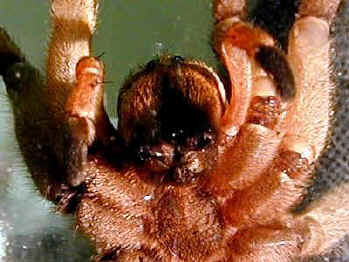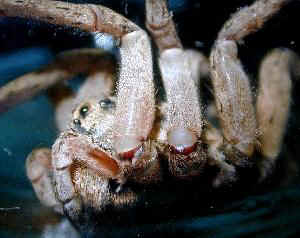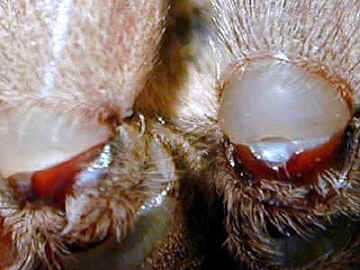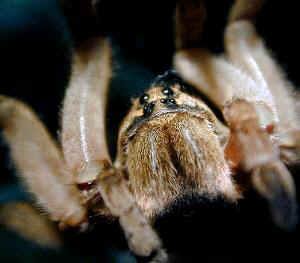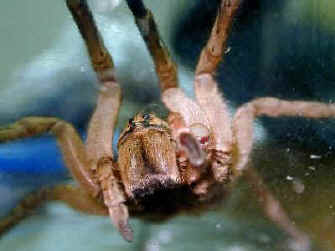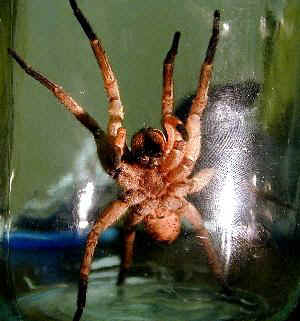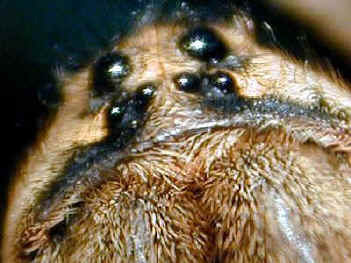|
If he looked like the jumping sort, I'd have been running away at this moment. |
A full-sized crop of the above picture. |
|
|
You see what I mean by "BIG OLE SPIDER"? |
He wants out. Bad. |
|
|
Not a chance, pal. |
He's got a decent reach, but the jar will hold him. At least I hope so. |
|
|
I couldn't get a shot of his fangs, but believe you me, they are quite to scale. |
This was a shot I took just to take it, but it turned out more interesting then I thought it would... |
|
|
This is a cropping from the above picture. Looks almost mechanical, doesn't he? |
Here's looking at you, kid. |
|
|
Here's thinking of biting you, kid. |
Spiders can't operate aluminum foil and rubber bands, right? RIGHT??? |
|
|
Six of the eight eyes. All the better to see you with, my dear. |
